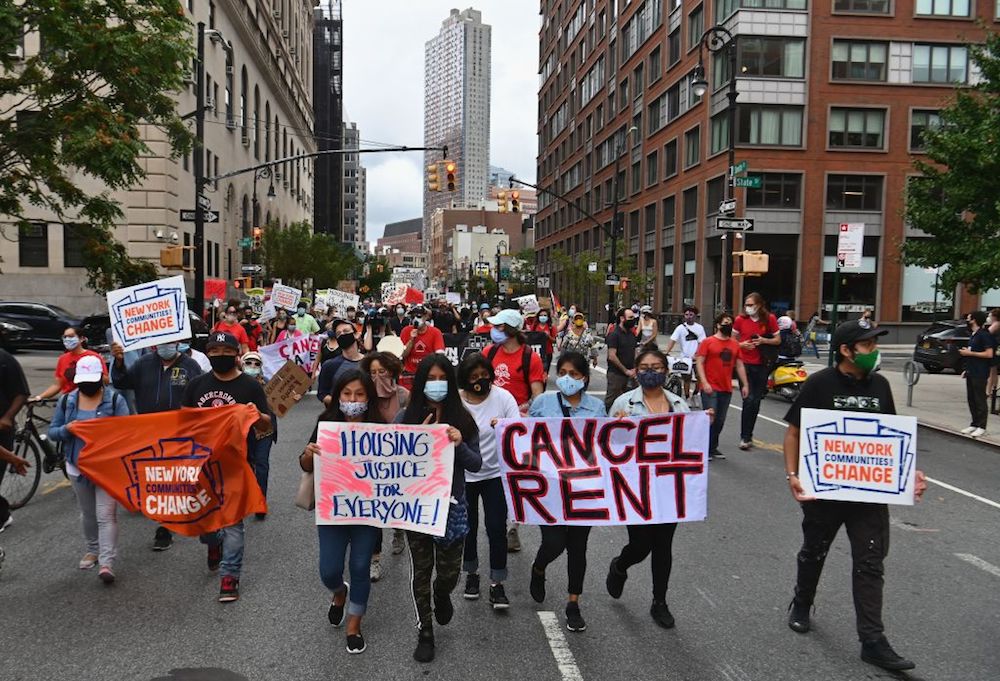Anarchism in Practice Is Often Radically Boring Democracy

Two hours into a weekly planning session, the 15 or so black-clothed, tattooed, and pierced activists were getting cranky. People wanted action, and tempers were flaring. I thought that my research on leftist organizing might finally get exciting.
But then the meeting facilitator quickly reminded everyone of the group’s commitment to discussion and consensus, and called a 10-minute break.
After milling around and getting snacks, everyone filed back into the cold, uncomfortable break room at the back of a small bookstore. It took another full hour of orderly debate before the group finally achieved consensus on a strategy for its next action: a weekly food collection for hungry families.
Curiously, the word these activists used to describe this commitment to group accountability was “anarchy.”
As an anthropologist who has studied and worked with leftist activists in the U.S. for more than a decade, I’ve come to understand anarchy as something that looks very different from the violent, lawless chaos that many people picture it to be.
After then-President Donald Trump personally incited a mob of his supporters to invade and ravage the U.S. Capitol in early January, political observers from the left, right, and center described the outcome as “anarchy.” Sen. Joni Ernst of Iowa used the term emphatically in an interview describing her experience in the Senate chamber: “It was horrifying, it was horrifying. … This was anarchy. … I don’t know how anybody could be proud about the actions that they took.”
The use of the term “anarchy” to describe the riot isn’t shocking—violent chaos is, after all, one of its generally accepted meanings. But it has little to do with how actual anarchists understand and apply their political philosophy.
While an exciting idea, anarchism in practice is, well, boring. Far from what window-smashing insurrectionists are doing, it mostly takes the form of an extremely slow-moving and highly rule-bound process of collective deliberation. Anarchy, paradoxically, means more rules, not fewer, and more collective responsibility, not less.
Unfortunately, since much of the United States has been misled into thinking that anarchists—specifically, those involved with “antifa”—were responsible for the putative anarchy at the Capitol, an impressionable observer might think that actual anarchists want violent chaos.
The cognitive dissonance would be amusing if the situation weren’t so horrifying. If there had been actual anarchy in the Capitol that day, rather than a right-wing insurrection, Ernst and her Republican colleagues would likely have been in for a long, well-facilitated meeting aimed at complete consensus.
So, what is anarchism apart from these caricatures? And how does it relate to “antifa”?
The term “anarchy” literally means “without [a] ruler,” and not, as many believe, “no rules.” Although many anarchists want radical change, the change that most envision is not societal breakdown but rather people learning to collectively rule themselves (or in other words, direct democracy).
The basic premise guiding anarchist political philosophy is simple: Humans are fundamentally cooperative by nature and, when given the chance, flourish in situations of collective self-governance. By self-governance, anarchists typically mean an arrangement in which every person has an unalienable right to participate fully in any political decision made on their behalf—and to leave any association that makes a decision they find unconscionable.
Taking the term in this broadest sense, attempts at anarchist societies or collectives over the last two centuries have been numerous and persistent, if often short-lived. However, as anthropologists like to point out, humans organized themselves in stateless societies with great success for much of ancient history, and many continue to do so in various ways, without using the label “anarchy.” In fact, “state-level” societies have existed for only a fraction of the roughly 300,000 years modern humans have thrived—emerging an estimated 5,000 years ago—and should still be regarded as an experiment, with mixed results.
Contemporary antifa groups represent a direct-action wing of existing anarchist organizing. In other words, most of them are anarchists who specifically focus on confronting fascism.
The idea of anti-fascism in principle ought to be unobjectionable; after all, the United States fought a world war against fascism not so long ago. But trouble arises in what exactly counts as “fascism.” Many anarchist groups see things like predatory lending and redlining or structural racism in policing as inherently fascist, and they use tactics that range from anti-eviction campaigns to prison advocacy projects to protests.
If authoritarianism depends on spectacle and stagecraft, democracy is, by contrast, often a boring affair.
Right-wing caricatures depict antifa as a single, organized militia-like force united in its hostility to democracy and its pursuit of social disorder and chaos. In reality, anti-fascism is a set of principles and tactics embraced by loosely connected groups. There is no central command or steering committee; to the contrary, the anarchist principles that underwrite anti-fascism lead to endless debates and conflicts even within groups.
Some of the antifa organizers I have known subscribe to specific ideological brands. But most are just “small-‘a’ anarchists”: They aren’t particularly dogmatic about the general goal of creating just, free, smaller-scale democratic collectives. The venerable slogan that many use is telling: “Building a new world in the shell of the old.”
As political philosophers have long noted, it is much more complicated and difficult for people to rule themselves than to be ruled (or represented). Whether the anarchists in question are organizing a prison books collective, a community food drive, or a living wage protest, meetings and planning sessions are characterized by complicated strategies and procedures aimed at establishing complete consensus.
In the case of the anarchists described earlier who were running a food drive, the full hour of debate after the break came down to this question: Should they collect only healthier foods, or in this case, did any calories count as good calories?
One young woman, growing increasingly impatient, had shouted: “Look, I’ve got two garbage bags full of perfectly good bagels from the bakery leftovers! I’d rather they not get completely stale while we sit here all week arguing about the ethics of giving hungry people white bread!”
A young man responded with a concern: “We’re trying to help people—we shouldn’t be giving them this nasty processed food just because that’s all we can get!”
Eventually, as the facilitator moved through an orderly speaking rotation, some in the group who had grown up poor talked about the dignity of making their own choices, and the group reached consensus: They would simply collect whatever free food they could find and offer it around through community connections.
The meeting ended up taking three long hours. But this characteristic tedium is a feature of anarchism and one that is inseparable from its insistence on genuine democracy.
If authoritarianism depends on spectacle and stagecraft, democracy is, by contrast, often a boring affair. Unlike the siege of the Capitol or a typical Trump rally, with few exceptions, most anarchism actually in existence is much like this: peaceful, constructive, and downright dull.
This lack of spectacle, in fact, marks a key difference between far-left forms of political organizing, like antifa, and the far-right forms on display in Washington, D.C., in early January or at the “Unite the Right” rally in Charlottesville, Virginia, in 2017. As I saw firsthand at the counter-protest in Charlottesville, the former is pro-democracy and the latter is authoritarian. If in practice both of these movements tend to mistrust centralized government, anarchists are suspicious of its forms—even representative democracy—because they find it insufficiently democratic. In contrast, many on the far right overtly glorify actual historical fascists, Nazis especially.
In the end, it is perhaps no surprise that, along with Black Lives Matter activists, one of the leftist boogeymen for Trump and his followers has been a scattered pro-democracy movement. In a bit of strategic hypocrisy, the far-right’s vilification of antifa maps precisely onto the actual characteristics of Trumpian politics over the last four years: centralized, violent, nihilistic, spectacular.
The confounding thing is the apparent ease with which the idea of “anti-fascism” and anarchism more broadly has slipped into general usage as being synonymous with nihilistic violence—even in liberal outlets. For instance, the racial politics of antifa participation in Black Lives Matter protests have been a matter of complex debate. But much of the condemnation of anarchist organizing relies on ascriptions of violence that simply don’t reflect the day-to-day organizing or tactics of the vast majority of anarchists.
While the reasons for these mischaracterizations are complicated, I would argue that in principle, anarchist organizing comes close to something that might cautiously be called leftist populism—a democratic politics in opposition to an entrenched elite. As such, it seems to be discomfiting across political lines. If Trumpist populism has been in effect White ethnonationalism, as some have argued, the liberal response appears to be a revived faith in the benevolence of centrist party elites. Neither of these governing philosophies look fondly upon decentralized democracy.
Some anti-fascist protests have led to violence, destruction, and vandalism; still, the principles underlying anti-fascist organizing are democratic in the truest sense. Americans collectively owe the movement and the concept deeper consideration. If this moment in history teaches nothing else, it shows how badly the U.S. needs both a national anti-fascist movement and a more directly representative, and accountable, democracy.
































